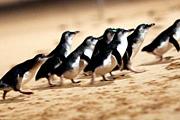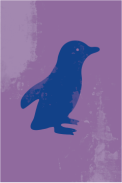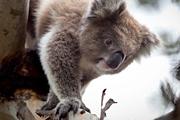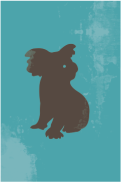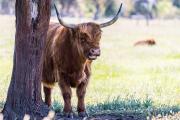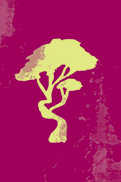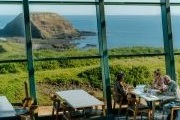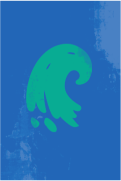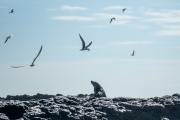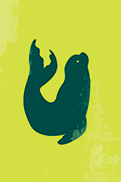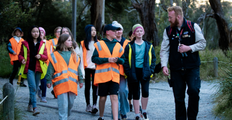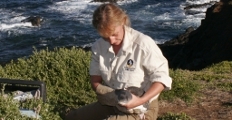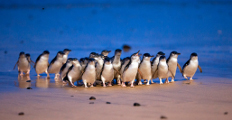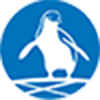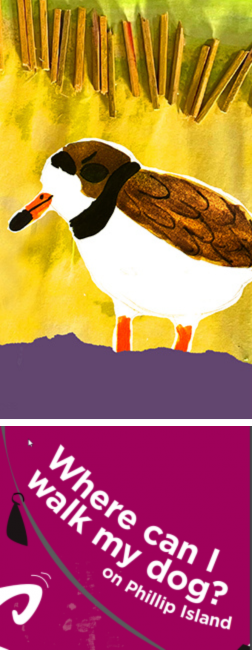SHARING OUR SHORES
Summer months are a busy peak holiday season. During this time, Phillip Island welcomes thousands of visitors who come here to surf, explore local attractions, nature reserves and trails, delight their taste buds in local cafes and restaurants, and simply enjoy their time with family and friends while soaking up sun on a beach.
Phillip Island is very fortunate – so many amazing species call it their home. And during summer months you can help our precious and vulnerable wildlife raise their young safely on our shores.
You can help protect our local wildlife by mindfully sharing our shores.
WHAT WILDLIFE CAN BE FOUND ON THE SHORES OF PHILLIP ISLAND
During this summer season
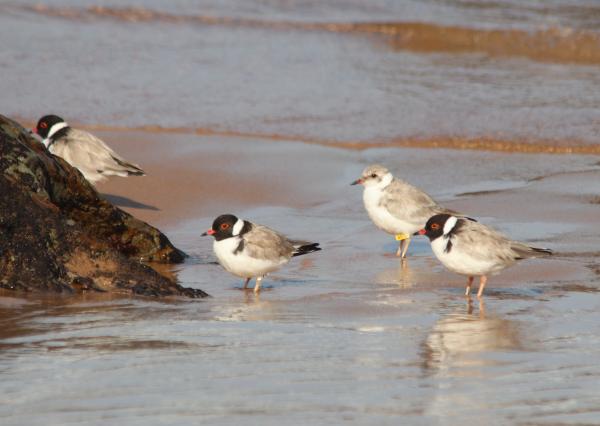
Hooded Plovers
Hooded Plovers typically nest on the sand on ocean beaches in the busy summer months. Their nests, eggs and chicks are extremely well camouflaged and prone to being accidentally trodden on, disturbed by people and animals passing by, or harmed by dogs. This disturbance can cause adult birds to move away from their nests, which can be fatal for their chicks.
For more facts about the species, have a read of our Hooded Plover Nature Notes
How you can help hooded plovers
When walking past a wildlife refuge, please ensure your dog is on a lead and walk quickly past the wildlife refuge and along the water's edge.
Be on the lookout for hooded plovers and their behaviour wherever you walk - the birds may move from the protected areas.
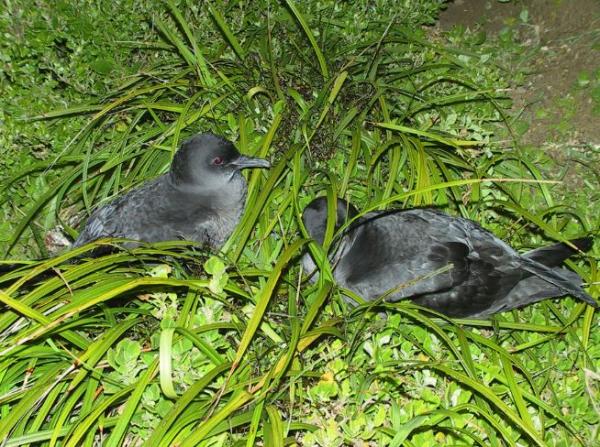
Short-tailed shearwaters
The short-tailed shearwater is a mid-sized migratory bird, and one of just a few that come to Australia to breed. These birds - also known as muttonbirds - travel around the world and arrive on Phillip Island around the end of September after a 16,000km migration from the waters off the Aleutian Islands near Alaska.
They spend their time around Australia’s southern coastline, renovating past nests and building new ones. The breeding pairs lay just one egg in the last week of November in a sand dune burrow. The egg hatches in mid-January and the parents feed the chick before beginning their migration back to the northern hemisphere in mid-April. The fat, fluffy chick is left behind until it grows its ‘adult’ feathers and begins the migration weeks after the adults leave.
Please refer to our Short-tailed shearwater Nature Notes for more information.
How you can help short-tailed shearwaters
Please stay on paths and away from the dunes - this is where shearwaters make their fragile burrows, which can easily be collapsed.
Please keep your cat contained to your property, especially at night - shearwater chicks left alone in their burrows are vulnerable to predation.
Please ensure all rubbish ends up in the bin - shearwater parents can mistake rubbish for food.
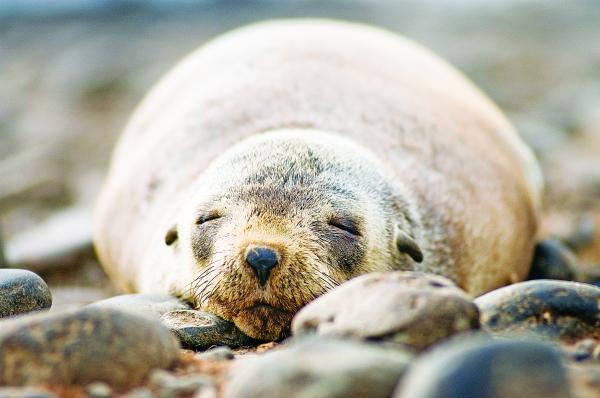
Australian Fur Seal
Australian fur seals play an important role in Australia's marine ecosystems. There are around 20,000 seals at Seal Rocks (off Phillip Island) and 10,000 at The Skerries (near Mallacoota).
The Australian fur seal is the largest of nine species of fur seal in the world. They have two layers of fur, a longer outer layer of guard hairs with a fine underfur for warmth.
Although they can breathe air, Australian fur seals prefer to live in the water and spend weeks feeding at sea. As you can imagine, they’re very good swimmers.
For more facts about the species, please check out our Australian fur seal Nature Note.
How you can help Australian fur seals
Please ensure all rubbish ends up in the bin and cut any loops before disposing of them - playful seals can easily become entangled in this rubbish.
Seals often "haul out" to lie on beaches or other areas to rest or moult, moving between land and sea of their own accord. This is normal behaviour and is especially prevalent over the summer months as the seal pups have been weaned and are fending for themselves.
What to do if you see a seal on the beach
Please leave it alone and maintain a distance of least 30 metres to allow the seal to rest.
Keep dogs on a leash and at least 50 metres away from the seal to avoid frightening or injuring it.
Please do not feed the seal as it may become habituated to humans and unable to fend for itself in the wild.
Please do not attempt to move the seal back into the water or throw water over it – they can self-regulate their body temperature.
Report sick or injured wildlife
To report sick or injured wildlife on Phillip Island, please call Wildlife emergency response line on (03) 8400 7300 24/7 or use this link to report online.
What can I do as a business owner?
Phillip Island businesses can get involved in protecting our native wildlife by making sure their staff are aware of the “Sharing Our Shores” campaign, and what they and their families can do to help keep the wildlife safe.
You can put campaign posters in store and share our posts on your social media to let your customers know that you will be supporting this important local campaign.
Contact us to receive a free campaign poster.
What is the Phillip Island Nature Parks Conservation team doing?
During summer months, December 2022 -February 2023, Phillip Island Nature Parks’ rangers and volunteers will patrol the shores to monitor the nesting activities of beach nesting bird species, which contributes to long term research studies into the breeding success and conservation status of these threatened birds.
Can I volunteer or help?
Yes! We would love the help of volunteers to assist our rangers on patrols by collecting and collating data. NOTE: volunteers will not be handling birds. Places are strictly limited.
Please contact us if you would like to take part.
Yes! Volunteers can assist by joining the Hooded Plover Watch. This team of citizen scientists gather observational data for our beach nesting bird team. You can find more information here.
School Poster Competition*
Phillip Island primary schools are invited to take part in the Sharing Our Shores Poster Competition from 1 December 2023. To participate students from prep through to grade 6 can make and submit one poster using the theme ‘Be a Hoodie Heros’.
Students are free to use any material, including paint, textas, pencils, collage, copyright-free original photos and computer graphics.
Categories:
Prep
Grades 1-2
Grades 3-4
Grades 5-6
Winning posters will be used in the 2024/2025 campaign! Get your entries in now!
Prize for each category includes a family 3 Park Pass!
Download poster competition information HERE and entry form HERE
THANK YOU TO OUR PARTNERS


*Terms and Conditions
1. Entry to this competition is free. 2. Entry is open to all children who reside on Phillip Island or San Remo, or attend a Primary School on Phillip Island, from Prep to Grade 6. This year we also have two extra categories for students of Aboriginal and Torres Strait Island descent and students with special needs who reside the region. 3. Entries close 5pm, 30 April 2024, AEDT. 4. Entries must be A3 in size (or A4 and we can double it). Please note only scanned digital entries are being accepted this year. Read full Terms and Conditions HERE.





